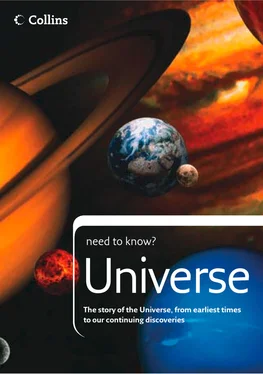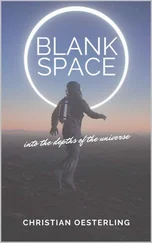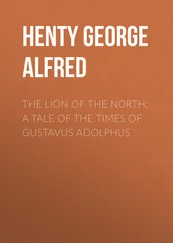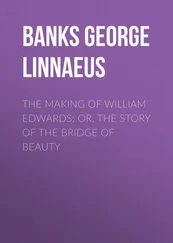Heliocentric (Sun-centred) theories can actually be traced back to ancient Greece, to philosophers Pythagoras, Philolaus and Aristarchus. However, in 1514 Copernicus was bold enough to produce a small handwritten pamphlet (but canny enough not to put his name to it) which challenged the very fundamentals of Ptolemy’s geocentric (Earth-centred) view of the Universe. Copernicus stated that the stars are at an immense distance, compared to the distance from the Earth to the Sun. He was convinced that the Sun, not the Earth lay near the centre of the Universe, and that the apparent daily rotation of the heavens is caused by the Earth’s rotation. Copernicus went on to explain that the apparent annual circuit of the Sun around the ecliptic is caused by the Earth revolving around the Sun, and the apparent retrograde motion of the planets is caused by the motion of the Earth along an orbit inside that of the outer planets.
His explanation of the phenomenon of retrograde motion, and dispensing with the need to introduce epicyclic planetary motions, is perhaps the most insightful and original of Copernicus’ theories. Copernicus later laid out his potentially heretical heliocentric views of the Universe in his book On the Revolutions of the Heavenly Bodies , one of the first copies of which was given to him as he lay dying in 1543.
Placing the Sun at the centre of the Solar System, Copernicus’ heliocentric theory saw the Earth as one of six orbiting planets.
Tycho Brahe (1546–1601) is regarded as the last and greatest astronomer of the pre-telescopic era. A hot-headed Danish nobleman, Tycho lost part of his nose in a sword duel and later replaced it with a copper prosthesis. In an attempt to refute Copernicus’ view of the Universe, Tycho began making precise measurements of the stars and the movements of the planets with the aid of quadrants and cross-staffs from his observatory at Uraniborg on the island of Hven. Tycho’s careful naked-eye observations went on to provide plenty of evidence disproving the old established notions of the Earth-centred Universe.

Tycho Brahe, a great pretelescopic astronomer. He used naked eye devices to make incredibly accurate observations of planetary motions.
Understanding the Solar System
In the early 17th century, a potent combination of theory and observation expanded human notions about the Universe. The telescope opened everyone’s eyes to the cosmos.
Kepler, planetary law-giver
Despite finding evidence to support the idea that the Earth was a planet in orbit around the Sun, Tycho Brahe remained highly skeptical of the idea. He clung to the old notion of an Earth-centred Universe whose motions would eventually be explained as soon as the right mathematical model was found. Tycho’s assistant, Johannes Kepler (1571–1630), had none of his teacher’s confidence in the geocentric theory, and used Tycho’s extensive observations to place the heliocentric theory on a firm scientific footing. Profoundly religious, Kepler was convinced that God had created the Universe in accordance with mathematical rules, and that a knowledge of these rules was within human comprehension.
Galileo’s telescopic observation of the Pleiades. Only a handful of stars in this cluster can be seen with the unaided eye.
Having heard about a newly invented optical instrument that made distant objects appear larger, Galileo Galilei, a professor of mathematics at Padua University, ground and polished lenses to make small telescopes of his own by the end of 1609. Although a number of people had used telescopes in the months before Galileo placed his own eye to the eyepiece, Galileo is acknowledged to have been the first to turn the telescope to the skies to make scientific observations.
Anyone recalling their first telescopic views of the Moon and planets might conjure up some idea of how Galileo must have felt when he made his first observations through the telescope in 1609–10. Galileo’s telescopes consisted of two lenses mounted at either end of a tube – a plano-convex objective lens of about 30mm diameter at the front end to collect and focus light, and a smaller planoconvex eye lens at the other end to focus and magnify the image so that it can be viewed. Such an instrument is the most basic form of refracting telescope, yet despite it performing little better than today’s toy telescopes, Galileo gained amazing insights into the nature of the Universe. He discovered four small satellites orbiting Jupiter, which are still referred to as the Galilean Moons. Venus displayed phases, proving that it was a globe in orbit around the Sun. Sunspots proved that our central star is by no means perfect, and the Moon’s surface was revealed as a world with dark plains, craters and high mountains. Delving into deep space, Galileo observed that the glowing band of the Milky Way was made up of multitudes of faint stars.
must know
In the early 17th century Kepler formulated his famous laws of planetary motion, which stated that the planets orbit the Sun along elliptical paths and that they move faster when nearest to the Sun.
An observation of the Sun made by Galileo in July 1613 shows detail within sunspot groups.
During the 17th century, as telescopes improved, an increasing number of scientists and amateur astronomers were keen to learn more about the Universe by scrutinising celestial realms previously hidden from human view.
The Moon and its craters, from an observation made by Galileo in November 1609.
People began to question the workings of the Universe, and they now had optical tools with which to study the heavens more closely. Yet, despite the evidence, there were many who did not accept the reality of what the newly invented telescope revealed about the Universe. Some had seen the power of the telescope with their own eyes but believed that it was trickery or the work of the devil. Galileo and others who supported the Copernican view that the Earth was a planet in orbit around the Sun were denounced as heretics. Even Galileo succumbed to pressure when he was asked by the Inquisition to refute the idea.
The Moon is so big and bright that plenty of detail can be seen on its surface through even the most basic optical equipment – a fact that has delighted lunar observers from Galileo to the present day. It is not surprising that many early telescopic observers chose to study the Moon, to draw its features and to map its surface. The Moon’s landscape really did resemble parts of the Earth – Galileo had likened it to parts of Bohemia – so did it have an atmosphere and could it support life? Large dark patches visible with the unaided eye were discovered to be relatively flat grey plains. These areas became known as ‘maria’ (Latin: seas), but it was plain to see through the telescope eyepiece that they did not represent bodies of water.
The mid-17th century saw the publication of a number of detailed lunar maps. One by Johannes Hewelke (Hevelius) was published in his Selenographia , complete with names for lunar features based upon geographical landmarks, like Sicily, Mount Etna and the Mediterranean Sea. From his private observatory, Hevelius also made accurate measurements of star positions and produced the Uranographica , the most advanced star atlas of its time; the names for his seven new constellations are still used by astronomers today.
Читать дальше













